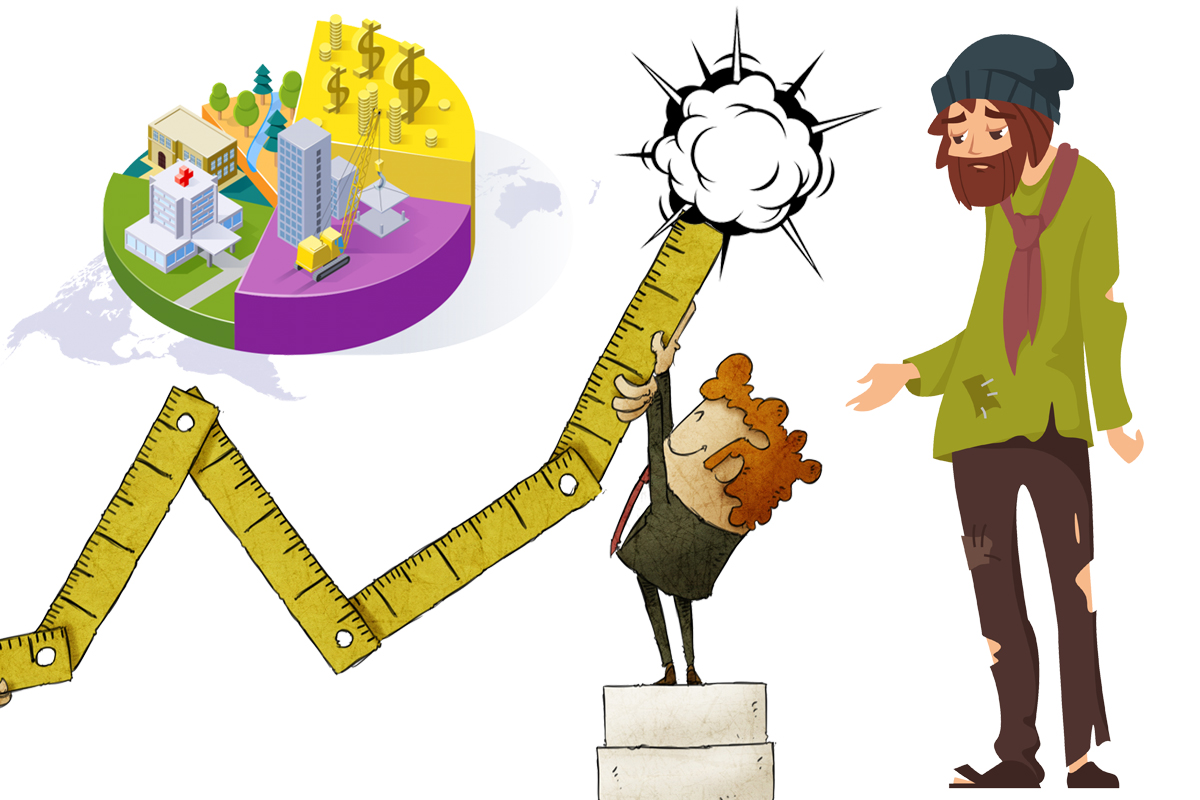From year to year, constant growth: GDP, value added, wages, gold and foreign exchange reserves, and everything seems to be stable and justified, but does everything correspond to its reality! And why sometimes you have to "painfully fall" from a great "height" and at a high speed, moving from crisis into default, referring to the outside world and similar factors.
How is the real situation in the economy really assessed, what is laid down in the main criteria for its stability and security!?
To begin with, let's define what the concept of real economic development implies, whether it is an enterprise or the state as a whole.
In its correct understanding, real economic development is determined by meeting the needs of society at the present time, in no case jeopardizing the ability of future generations to meet their own needs.
We will not go into the subtleties of analytical thought and the multifactorial nature of the topic under discussion, but in simple language we will try to reveal the basic essence of what this means.
Economic development is always assessed by its long-term trend and has a spiral shape - from ups to downs. But sometimes there are situations when this smoothness can be replaced by its sharpness with a "fall into a deep hole".
All stability is mainly determined by 3 factors:
- the size of the country's population and its working potential
- the value of national wealth
- the correspondence of this wealth to the value of the national currency
The classical model of economic development of the state – as it should be

It assumes a real increase in the value of its assets (enterprises that create a gross product) and the growth of the product itself (at the expense of the same assets). Both, in their totality, form the national wealth (NB) of the country, which, in fact, provides its national monetary unit. As much product, so much money.
The direct growth of the value of enterprises and businesses is provided by investments, at the initial stage of its development, and reinvestment of its own profits in subsequent periods, obtained by increasing the cost-effective volumes of a competitive and marketed product (GDP - gross domestic product).
All processes to increase the value of assets should take place either at the expense of direct investments (investments directly by owners for the purpose of managing these assets) or their own profits, and this is a very important moment for a healthy economy!
Also, with such a model, in dynamics, the growth rate of the money supply is significantly less than the growth in the value of national wealth (liquid value, i.e. in demand on the market), which always indicates an increase in the real level of well-being of the population. The amount of product per capita is growing significantly, relative to the number of monetary units. There is a reasonable strengthening of the national currency.
This whole model testifies to the balance of material values with the amount of money in circulation. And this, in turn, removes the need to turn on the printing press to resolve issues with creditors, thereby not contributing to the build-up of inflation and decrease in the solvency of the population (its impoverishment).
But there is such a situation that the economy is growing, and the people are getting poorer, but not immediately. Everything happens later, but at one moment and a complete collapse.
«Air» model of economic development of the state– as it happens

As in the previous model, national wealth and the level of well-being per capita are growing, but the growth rate of the money supply with this trend is significantly ahead of the growth of this wealth. As a result, product prices are growing faster than the income level of the population.
The main reason is the constant life on credit of everything that works for the economy of the state, and the constant growth of this credit debt.
It is growing mainly for the reasons that the real sector cannot generate real monetary profit and direct it to its growth throughout the long term. But on paper, there is this increase (from year to year) and it is constantly provided by the same loans. And if loans are growing, in the absence of real profits, then how to repay them:
- another re-crediting, if this is still possible on the part of creditors
- the inclusion of the printing press, in the form of any assistance from the state to the real sector - and this is inflation
The option of permanent crediting of production facilities in the long term is unacceptable for an efficient economy and indicates the lack of own money (usually generated by profitable activities) and, as a result, the possibility of self-financing. All this leads to an artificial increase in the value of the real manufacturing sector (toxic assets secured by an annual increase in the "air" layer and essentially worthless).
As a result, there seems to be annual economic growth (an increasing soap bubble), but with a faster growth rate of the number of monetary units in the economy (that is, the amount of money is growing much faster than the national wealth).
What, in the end, such a game can lead the state to, given the fact that constant re-crediting and its growth is not possible, even with a very strong desire of the government.
If there is no repayment, creditors will begin to accept state values as payment for existing debts at the price of their possible sale on the market. This will force the state apparatus to reassess its national wealth and still pay off the accumulated debt.
If the current value of property is declared not by the market (in the form of circulation of shares of value-forming companies on world stock exchanges), but by the government itself, then this forced revaluation of assets can lead to a complete default if all accumulated assets do not have their real value and are toxic.
As a result, the value of national wealth may fall by the nth number of times, relative to the available money supply in circulation, with the resulting impoverishment of the country's population for unjustified "fattening" in previous years.

With such a model, the adoption of such a decision is a very sensitive and fateful moment for the state, especially if it lacks market mechanisms of economic development that can put an end to all its previous merits.
The economy is growing, and the people are getting poorer – why is this happening! - Something like that!


































